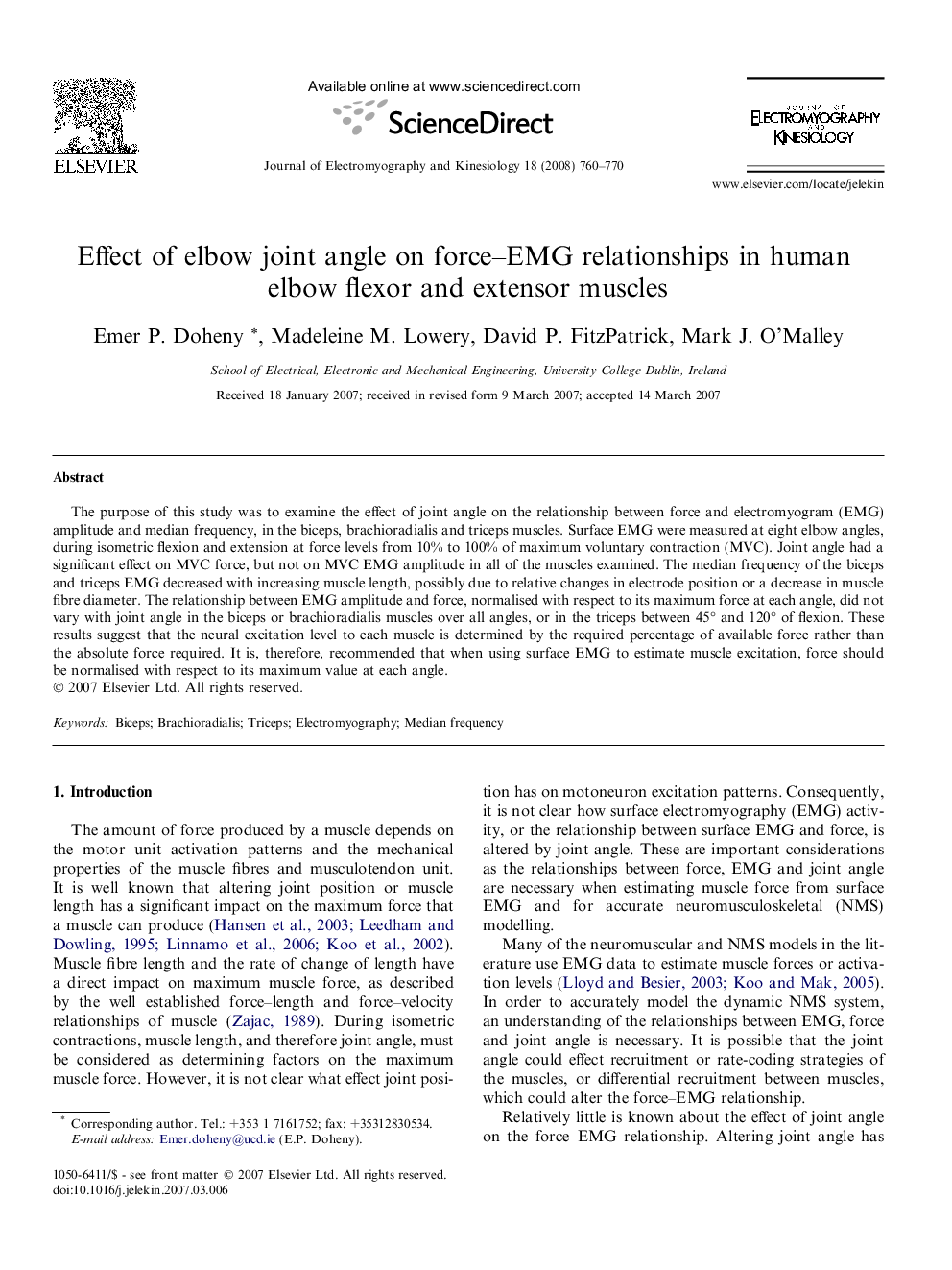| کد مقاله | کد نشریه | سال انتشار | مقاله انگلیسی | نسخه تمام متن |
|---|---|---|---|---|
| 4065531 | 1266256 | 2008 | 11 صفحه PDF | دانلود رایگان |

The purpose of this study was to examine the effect of joint angle on the relationship between force and electromyogram (EMG) amplitude and median frequency, in the biceps, brachioradialis and triceps muscles. Surface EMG were measured at eight elbow angles, during isometric flexion and extension at force levels from 10% to 100% of maximum voluntary contraction (MVC). Joint angle had a significant effect on MVC force, but not on MVC EMG amplitude in all of the muscles examined. The median frequency of the biceps and triceps EMG decreased with increasing muscle length, possibly due to relative changes in electrode position or a decrease in muscle fibre diameter. The relationship between EMG amplitude and force, normalised with respect to its maximum force at each angle, did not vary with joint angle in the biceps or brachioradialis muscles over all angles, or in the triceps between 45° and 120° of flexion. These results suggest that the neural excitation level to each muscle is determined by the required percentage of available force rather than the absolute force required. It is, therefore, recommended that when using surface EMG to estimate muscle excitation, force should be normalised with respect to its maximum value at each angle.
Journal: Journal of Electromyography and Kinesiology - Volume 18, Issue 5, October 2008, Pages 760–770